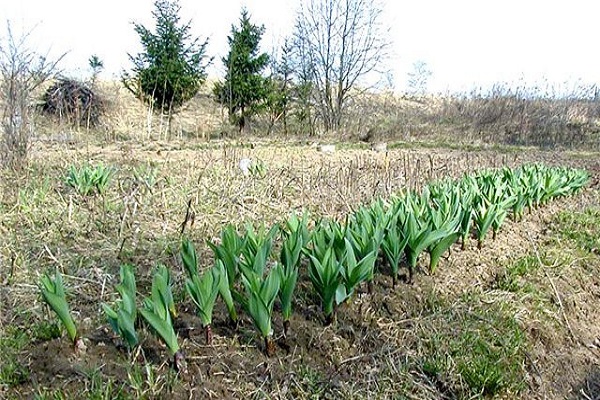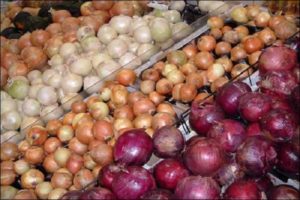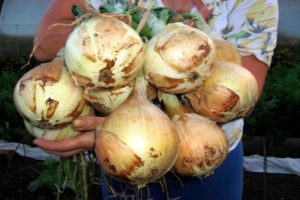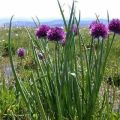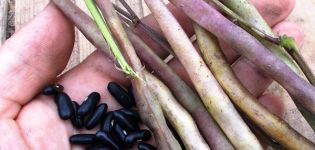Description of the Suvorovsky (Anzur) onion-garlic variety, its characteristics
Suvorov's onion (Allium suworowii) belongs to a group of plants native to the mountainous regions of Central Asia. A feature of the plant is a short growing season, a tall flower stalk with a ball-shaped bud of bright purple color, and an unusual garlic taste of leaves and bulbs. Onions and garlic are traditionally used as a condiment and as a medicine. In garden plots, it is planted as an ornamental plant.
Biological features
Suvorov's onion is a type of garlic that belongs to the onion family. Several similar species are united by the common name Anzur, which local residents have called wild plants since ancient times. The homeland of Suvorov's bow is considered to be the mountainous regions of the Pamir-Altai, Tien Shan, and the Syrdarya gorge.

Distinctive features of the plant are formed by the natural growing environment. The highland areas are characterized by severe winters with thaws and hot summers with sharp temperature drops at night and during the day. Favorable conditions for growth occur for a short period from the moment the snow cover melts to the onset of the summer heat:
- Anzurs manage to grow and form seeds in a short period of 2-3 months.
- Plants have a well-developed root system, adapted to the conditions of rocky ground.
- High peduncle and bright spherical bud 6–8 cm in diameter, which is an excellent honey plant.
- An active growth process begins already at an air temperature of 2–5 degrees and the soil warms up at a depth of 10 cm to plus values of 1–4 degrees.
- Garlic is characterized by a rapid change in growth phases, and with the onset of the dry period it passes into a stage inside the bulbous development.

Alpine garlic tolerates winter cold weather, hot dry periods, shade-tolerant. Plants are flexible, adapt well to new conditions, are not damaged by diseases and pests. The biggest problem for the Anzurs is acidic and waterlogged soils, and stagnant waters can completely destroy garlic.
Description of the plant
Anzura's bows are similar to each other, but small differences still exist:
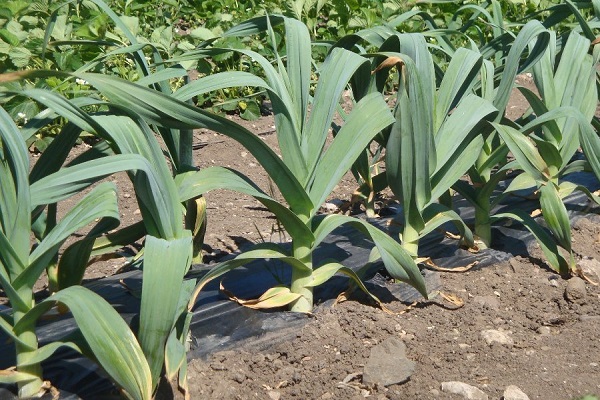
- The Suvorov onion, unlike most Anzurs, has a spherical onion with a diameter of 6–8 cm.
- The integumentary membrane is leathery, grayish, firmly grasping the base of the stem.
- The leaves are narrow and 5–8 cm wide, rough along the edge, green with a bluish bloom, 40–50 cm high.
- The peduncle reaches a height of 1–1.3 m. The inflorescence umbrella is multiflorous (from 100 to 300 flowers), very dense, has the shape of a ball 7–12 cm in diameter.
- Lily flowers with a blunt tip and a length of about 4 mm, are colored purple.
- the fruit looks like an egg-shaped capsule with black triangular seeds.
The onion grows in a bush, forming a powerful rosette from the leaves. Like all alpine onions, Suvorov garlic belongs to ephemeroid plants, with a very short growing season and a long dormant time. In this he is similar to tulips and daffodils. Even outwardly, at the initial stage, the plant is very similar to tulip seedlings. As they grow, mountain onions change, and more and more resemble giant garlic.
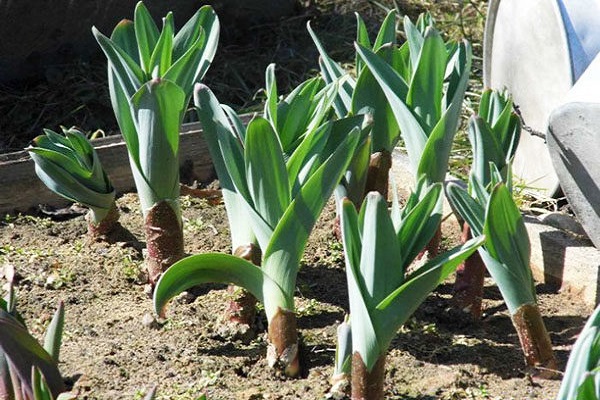
Important! Ephemeroid species of mountain onions, with a very short growing season, are listed in the Red Book of Uzbekistan, due to the danger of complete extinction.
The value of Suvorov's bow
Onions were cultivated for their nutritional and medicinal properties, as well as as an ornamental plant. Value:

- Plants of mountain onions are distinguished by a high content of vitamins, trace elements, phytoncides. They use young foliage for food, which appears in spring literally from under the snow. Leaves are used as a vitamin supplement in salads, side dishes, pie fillings. To create supplies, they are frozen in the refrigerator.
- The use of bulbs is practiced only after soaking in 5% saline solution. This preparation is necessary to remove the smell of essential oils and soften the overly harsh radish-like taste. Garlic heads are pickled, baked with honey, boiled in milk, canned.
- The medicinal properties of the Anzurov onions were discussed in the medieval treatises "On the Preservation of Health". Mountain garlic was used to treat colds, ear diseases, catarrh of the respiratory tract, scurvy. It was believed that the unique composition of the plant can improve vision, memory, brain function. With the help of the Anzurs, the stomach was strengthened, stones in the gallbladder were dissolved, and impotence was treated.
- Nowadays it is recognized that Anzur, included in the diet, stimulates the formation of nonspecific immunity, improves metabolism. Garlic has been successfully used as a tonic and prophylactic agent, equating its effectiveness with that of ginseng.
- The flowering plant looks very impressive in flower gardens and alpine hills as an unusual primrose.
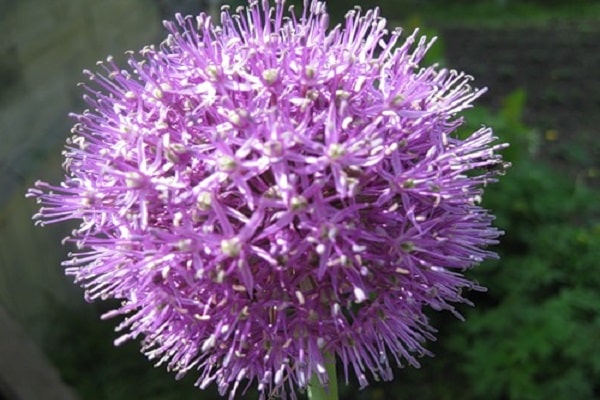
Until recently, high-quality canned food was produced from Anzur bulbs on an industrial scale. Unlimited harvesting of bulbs has led to the destruction of natural resources. As a result, the collection of ephemeral onions in the mountains is prohibited. Some of the plants, including the Suvorov onion, are listed as protected species in the Red Book of Uzbekistan.
Important! The bows of Anzura, to which the Suvorov bow belongs, are easy to introduce. They adapt well to new agro-climatic conditions.
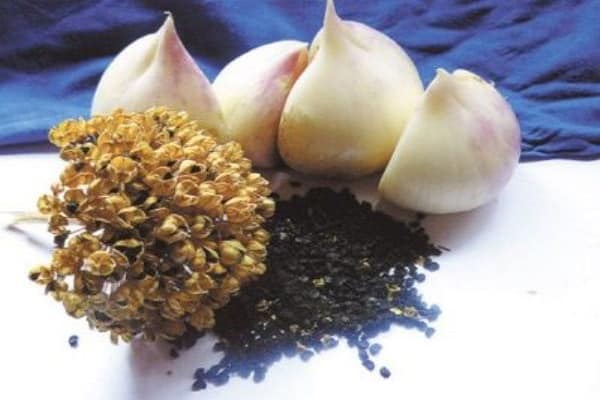
How to grow a Suvorov onion?
Anzur garlic onions adapt well to new conditions. Plants are cultivated with equal success in central Russia, in the Kuban and Siberia. The rules for caring for plants are very similar to the cultivation of tulips or winter varieties of garlic:
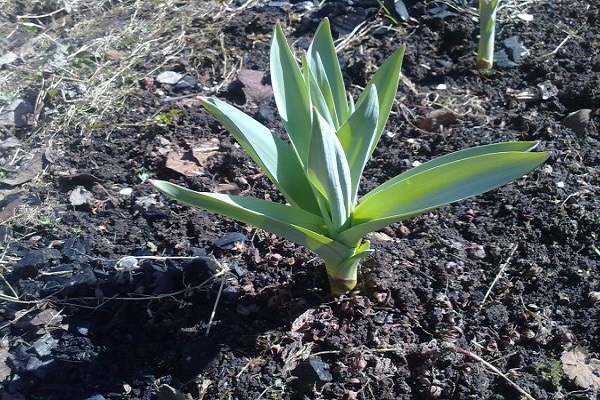
- In areas with a temperate climate, plants with a traditionally short growing season practically do not colonize the surrounding area. Anzura can be planted in thickened plantings, up to 40-50 medium-sized bulbs per square meter. meter.
- Plants are light-requiring and not adapted to waterlogging of the soil. Therefore, a well-lit area is selected, on an elevation, which will not be flooded, even for a short time.
- The bulbs are planted in early September so that the plants have time to take root before the onset of frost. The heads are placed in the furrows to a depth of 12–25 cm, depending on the size. Care consists in weeding and loosening the soil.
- Garlic sprouts literally from under the snow in spring. Flowering occurs in May or early June. By July, the seeds ripen, the leaves dry up, the plant enters the stage inside the bulbous development.
- Drying of the feather is a signal to dig up the bulbs.They are dried and stored at room temperature until autumn.
- You can dig out the heads of Suvorov garlic once every 2-3 years. At the same time, the nest grows and contains a set of large and medium-sized bulbs, as well as small nodules.
- If you want to get large heads of garlic, then the peduncles are removed immediately after flowering, in this case the plant will not give seeds. The seeds can be used for propagation, but it will take a four-year cycle to produce large bulbs.
- When using the tops for food, you should not completely cut the leaves. In this case, the bulb will receive less nutrition, which is provided due to the outflow of substances from the leaves to the storage organs. This will also affect full bloom.

The ubiquitous distribution of most Anzurov onions, and, in particular, Suvorov's garlic, is hampered by difficulties. They are associated with a long breeding period and the production of bulbs capable of flowering. Ornamental types of onions have been cultivated abroad for a long time and are present in the catalogs of companies as plants for forcing flowers. We have officially registered the Samson variety of Suvorov onion, but this valuable plant is still exotic in garden and backyard plots.
